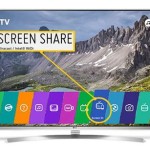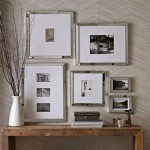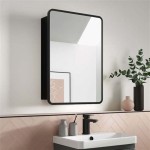How To Recognize a Two-Way Mirror
The presence of a two-way mirror, also known as a one-way mirror, can raise significant privacy concerns. These mirrors are designed to appear as regular mirrors on one side while allowing observation from the other. While commonly used in security settings, retail environments, and law enforcement facilities for legitimate purposes, their potential for misuse necessitates awareness and the ability to identify them. This article provides information on how to recognize a two-way mirror and addresses various methods for distinguishing them from standard mirrors.
The Knuckle Test
The knuckle test is a widely recommended and relatively easy method for initially assessing a mirror. This test involves tapping a fingernail against the surface of the mirror and listening for the sound produced. The characteristics of the sound can then be used to discern between a standard mirror and a potential two-way mirror.
In a standard mirror, a thin layer of reflective coating, typically silver or aluminum, is applied to the back of a pane of glass. When knocking on a standard mirror, there is typically a noticeable gap between the reflective coating and the front surface of the glass. This gap creates a distinct and hollow sound. The sound wave reverberates slightly within the glass, resulting in an echo-like effect or a noticeable delay between the tap and the returning sound.
Conversely, a two-way mirror is constructed differently. The reflective coating is applied directly to the surface of the glass facing the observation room. This close proximity of the reflective layer to the surface eliminates the air gap present in a standard mirror. When tapping on a two-way mirror, the sound produced tends to be duller and more solid, lacking the hollow echo or reverberation characteristic of a standard mirror. There is typically no noticeable delay between the tap and the returning sound.
It is essential to note that the knuckle test is not foolproof and can be influenced by factors such as the thickness of the glass, mounting materials, and surrounding acoustics. Therefore, this test should be considered a preliminary assessment and not the sole determinant of a two-way mirror. Multiple factors and additional tests are necessary to confirm the nature of the mirror.
The Light Test
The light test leverages differences in light transmission properties between standard mirrors and two-way mirrors. This method focuses on how light behaves when applied to the surface of the mirror and observing what might be seen on the opposite side.
A standard mirror is designed to reflect the majority of the light striking its surface. The reflective coating on the back of the glass effectively prevents most light from passing through. Consequently, in normal lighting conditions, a standard mirror will primarily display reflections and will not allow a clear view of anything behind it.
A two-way mirror, by design, allows some light to pass through the reflective coating. This is crucial for the observation room to be able to see through the mirror. To conduct this test, extinguish the lights in the room where the mirror is located. Then, brightly illuminate the opposite side of the mirror, if accessible. If it's a two-way mirror, one may be able to see through to the other room. The effectiveness of this test depends significantly on the difference in light levels. The brighter the room on the other side, and the darker the room where one is standing, the easier it will be to see through the mirror if it is a two-way mirror.
However, if the reverse is true and the room where one is standing is brighter than the opposite room, it will be more difficult to see through the mirror, as the reflection will overpower any view of the other side, regardless of whether it's a standard or two-way mirror.
This test is subject to environmental conditions. Ambient light and the intensity of the light source used can affect the results. It is also important to consider that some modern mirrors may have coatings that reduce light transmission slightly, even if they are standard mirrors. Also, the test is not effective if one cannot access the other side of the mirror.
Physical Inspection of the Mirror and Surroundings
Beyond the knuckle and light tests, a thorough physical inspection of the mirror and its surrounding environment can provide valuable clues about its nature. This involves examining the mirror's edges, the wall it is mounted on, and any surrounding objects for irregularities or signs of modification.
Carefully inspect the edges of the mirror. Standard mirrors are usually set into a frame or are affixed to the wall with clips or adhesive. The edges are typically smooth and finished. In contrast, two-way mirrors might have edges concealed within the wall or behind molding to prevent detection. Look for any gaps, seams, or unusual framing that might indicate access to the other side.
Tap or press on the surface of the mirror. A solid, unyielding surface suggests that the mirror is mounted directly against a wall. A slightly flexible or vibrating surface might indicate that there's a space behind it. This space could house an observation room. Pay attention to the presence of any unusual hardware or mounting systems. Two-way mirrors might require specialized mounting to support their structure or to allow for removal or replacement. Look for screws, brackets, or other fasteners that seem out of place or that don't align with the design of a standard mirror installation.
Listen carefully for any sounds coming from the wall behind the mirror. If possible, place an ear against the wall and listen for any muffled voices, movements, or other noises that could indicate activity in an adjacent room. Also, inspect the surrounding area for clues that might suggest the presence of surveillance equipment. Look for hidden cameras, microphones, or other devices that could be used to monitor activity in the room. Pay attention to the arrangement of objects in the room. Are there any items that seem unusually placed or positioned to provide a better view of the mirror? For example, a strategically placed plant or picture frame could be used to conceal a hidden camera.
Finally, consider the context of the location and the likelihood of surveillance. In areas where privacy is expected, such as changing rooms or restrooms, the presence of a two-way mirror would be highly suspect. In contrast, in security-sensitive areas, such as retail stores or casinos, the use of two-way mirrors might be more common and justifiable.
Considering Parallax and Reflection Quality
Examining the parallax effect and the reflection quality can also provide clues about whether a mirror is two-way. This requires observing the mirror from various angles and assessing the clarity and distortion of the reflections.
Parallax refers to the apparent shift in the position of an object when viewed from different angles. In a standard mirror, the reflective surface is located behind the glass, resulting in a slight parallax effect. As one moves their head from side to side, the reflection will appear to shift slightly relative to the background. In a two-way mirror, the reflective surface is closer to the front of the glass, reducing the parallax effect. When moving one's head, the reflection will appear to shift less noticeably compared to a standard mirror.
The quality of the reflection can also provide clues. Standard mirrors typically produce clear and undistorted reflections. The reflective coating is carefully applied to ensure a smooth and even surface. Two-way mirrors may have slightly distorted or less clear reflections. The reflective coating is often thinner or less uniform to allow some light to pass through, which can affect the quality of the reflected image. Look for any blurring, haziness, or unevenness in the reflection.
Examine the reflection of objects at different distances. In a standard mirror, objects at varying distances will be reflected with proportional clarity. In a two-way mirror, objects that are closer to the mirror may appear sharper than objects that are farther away. The difference in clarity may be subtle but can be noticeable upon close inspection.
Pay attention to the overall brightness and contrast of the reflection. Two-way mirrors may produce reflections that are slightly dimmer or have lower contrast compared to standard mirrors. The reduced reflectivity is a consequence of the mirror's design, which allows some light to pass through.
Seeking Professional Assistance
In situations where certainty is paramount or when initial investigations are inconclusive, seeking professional assistance is advisable. Professionals specializing in security and surveillance detection possess specialized equipment and expertise to accurately identify two-way mirrors and other hidden surveillance devices.
Security consultants or private investigators often offer services that include comprehensive inspections for hidden cameras and two-way mirrors. These professionals use tools such as thermal imaging cameras, radio frequency detectors, and specialized optical equipment to identify anomalies and confirm the presence of surveillance devices.
They can conduct a thorough assessment of the mirror's construction, analyze the light transmission properties, and examine the wall and surrounding area for signs of modification. Their expertise extends beyond basic tests and involves a deep understanding of the techniques used to conceal surveillance equipment.
Furthermore, professional assistance can provide legal recourse in cases where unauthorized surveillance is suspected. A security consultant can document their findings and provide expert testimony in legal proceedings. If concerns about privacy encroachment arise, consulting with an attorney specializing in privacy law is recommended. An attorney can advise on legal rights and options for addressing potential violations of privacy.

Lpt Always Do This Finger Test To Check For 2 Way Mirrors In Hotels And Changing Rooms R Lifeprotips
How You Do A Quick Check For Cams Or Two Way Mirrors In Trial Rooms Quora

How To Detect A Two Way Mirror Fingernail Test

How To Tell If You Re In A Room Restroom Motel Etc With Mirror Or
Is It Glass Or A Two Way Mirror The Balancing Act

How To Check For Two Way Mirrors And S In Changing Rooms Trending Posts Mirror Find Out
How To Tell If A Mirror Is Two Way Or Not Quora

Forwarded Messages A Mirror Or 2 Way Glass Two Helpful Hints

How To Tell If A Mirror Is One Way Glass Boing

Tips For Identifying Whether Your Mirror Is Two Way Or Not Ledmyplace








